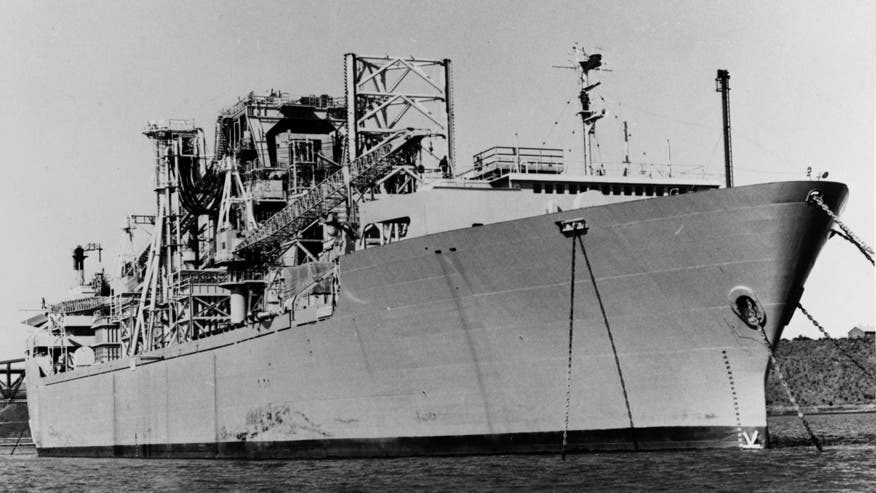More than 40 years after it was the centerpiece of what PRI calls "possibly the biggest and strangest covert operation" of the Cold War, a piece of CIA history is headed for the scrap heap.
After the Soviet Union failed to find one of its nuclear submarines that sank 1,500 miles northwest of Hawaii in 1968, the CIA swooped in, hoping to recover both the sub's nuclear missiles and its cryptography gear, according to Reuters.
Under the code name Project Azorian, the CIA schemed to raise the 14 million-pound sub three miles to the surface—an undertaking considered impossible. "I think given a better background in marine engineering, we likely would not have tried," says the retired CIA employee who finally revealed the long-officially-secret story in 2012.
The ship that the CIA came up with—and what is now being scrapped: the Hughes Glomar Explorer. The ship was unique to say the least: 619 feet long and too wide to fit in the Panama Canal, it featured massive hydraulics, ball bearings the size of bowling balls, and one huge claw with which to grab the sub wreck.
The CIA was able to cover up the construction of the ship for four years by convincing the world Howard Hughes was building it to mine manganese nodules from the ocean floor.
Project Azorian was modestly successful, with the Hughes Glomar only raising the bow of the Soviet sub. The CIA's infamous "Glomar Response" ("we can neither confirm nor deny...") has its origins in the agency's attempt to keep the project secret even as details leaked.





2 komentar:
specifictommy.blogspot.com/
prothemes.biz
Posting Komentar